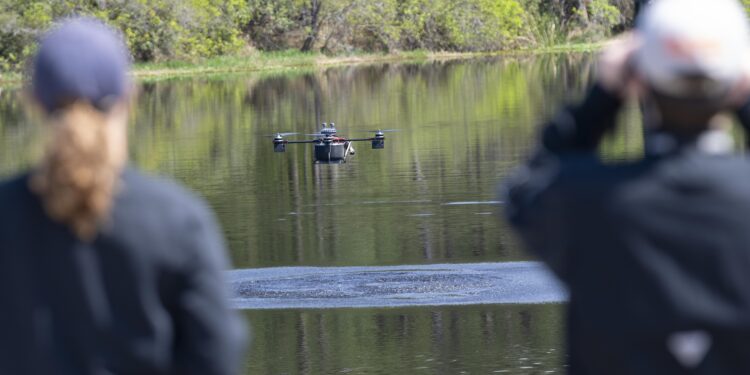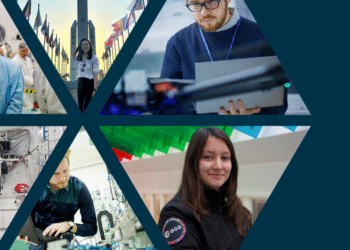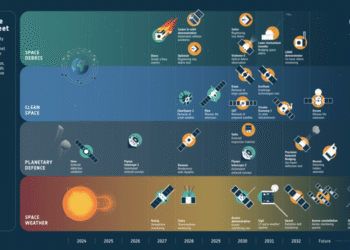Source: NASA Stennis Provides Ideal Setting for Range Operations
NASA Stennis opens integrated air, land, and marine ranges for uncrewed systems
NASA’s Stennis Space Center near Bay St. Louis, Mississippi, is expanding its role beyond rocket propulsion testing by opening a comprehensive set of ranges for uncrewed systems. The site now supports flight, surface, and subsurface testing within federally controlled airspace, a protected canal network, and extensive secured land, creating a multi-domain test environment for government, industry, and academia.
Air: One of two non-military restricted airspaces in the U.S.
The Federal Aviation Administration established Stennis’ restricted airspace in 1966 and expanded it in 2016. The center operates two primary zones designed to separate test activity from regular air traffic:
- A propulsion testing area from ground level up to 12,000 feet for engine and hazardous operations.
- An aircraft operations zone spanning roughly 100 square miles up to 6,000 feet, including about 15 dedicated acres for launch and recovery of uncrewed aircraft.
Range services include safety reviews, coordination with FAA air traffic control, and continuous communication with range safety personnel during operations. Stennis has begun customer-based use of this airspace, including a 2024 agreement supporting flight tests of autonomous, solar-powered aircraft.
Marine: Controlled canal network for surface and subsurface trials
The marine range centers on a 7.5-mile canal system protected by a lock-and-dam complex linked to Pearl River tributaries. The controlled waterway supports a variety of platforms, such as unmanned surface vessels, autonomous underwater vehicles, remotely operated vehicles, and aerial systems requiring water landings. The sheltered setting enables testing of sensitive sensors, autonomy stacks, and collaborative multi-domain concepts without exposure to open-water risks or interference.
Ground: Large secured footprint and expansive buffer
On land, Stennis encompasses 13,800 acres of fenced facilities surrounded by a 125,000-acre acoustical buffer zone with no permanent habitation. Originally established to accommodate high-energy rocket engine testing, the buffer also reduces risk to the public during developmental operations involving new uncrewed technologies. The federal city model at Stennis hosts more than 50 organizations that share site services while pursuing independent missions, with available infrastructure for offices, storage, laboratories, and light manufacturing.
Capabilities at a glance
- Air: Restricted zones to 12,000 ft and 6,000 ft, FAA-integrated range control, dedicated UAS launch/recovery areas.
- Marine: 7.5-mile lock-and-dam canal system for USV, AUV, ROV, and amphibious UAS operations.
- Ground: 13,800-acre secure campus plus 125,000-acre buffer for hazard reduction and large-scale exercises.
- Operations support: Safety reviews, test planning, and real-time range coordination across domains.
Positioned for growing uncrewed demand
As autonomous technologies advance, developers require instrumented, low-risk environments to validate flight safety, command-and-control links, detect-and-avoid, maritime autonomy, and cross-domain teaming. Stennis’ integrated ranges enable iterative testing for use cases spanning national security, disaster response, environmental monitoring, logistics, and spaceflight support.
Under its 2024–2028 strategic plan, Stennis is prioritizing range access and business processes to support uncrewed systems testing and operations. Recent activity, including autonomous aircraft trials conducted under dedicated agreements, signals a shift toward broader customer engagement and multi-domain mission development.
Why it matters for the space sector
Stennis’ propulsion heritage and safeguarded geography give aerospace teams a venue to mature systems that bridge air and space, such as high-altitude platforms, drone-based inspection of ground infrastructure, and maritime autonomy supporting launch logistics. By combining restricted airspace, controlled waterways, and secured land in one location, the center offers a streamlined pathway from early integration to operational demonstrations with consistent safety oversight.






















